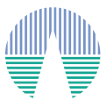|
This application is based in VOSA (VO Sed Analyzer) software.
It is a tool designed to perform the following tasks in an
automatic manner:
- Read user photometry-tables.
- Query several photometrical catalogs accessible through VO services (increases the wavelength coverage of the data to be analyzed).
- Query VO-compliant theoretical models (spectra) and calculate their synthetic photometry.
- Perform a statistical test to determine which model reproduces best the observed data.
- Use the best-fit model.
(Note: currently available for planets detected by direct images and a limited collection of theoretical grids, developed for brown dwarfs and massive planets)
(Take a look to the VOSA Help)
You need a username and password to use the application because it keeps a number of files and database entries with your results
and we need to be able to identify which results belong to each user so that you can recover them in future sessions. If you don't have a username and password yet, please feel free to register.
|


